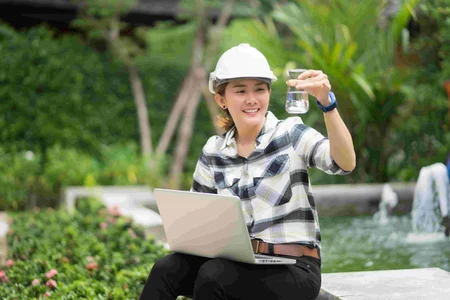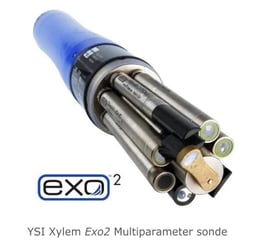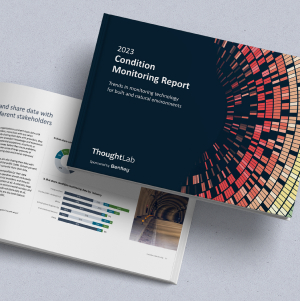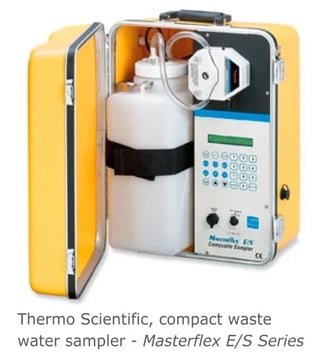
-
Featured
Hydrometry
Environmental Technician
Environmental Manager/Owner
Blog
Asset Owner
All
- 07 February 2024
- | Blog
How remote sensors can support holistic water quality monitoring
Water quality monitoring is carried out for a number of reasons. Businesses with environmental licenses are required to monitor discharges to water or in the receiving environments to demonstrate compliance with license conditions. Government departments and research organizations monitor water to understand how activities in a catchment affect water quality to inform water quality models, to detect trends in water quality or events.
Monitoring of water can be undertaken manually by sampling or in-situ analysis with handheld meters, through to automated samplers (ranging from simple first flush to complex event-based samplers), all the way to continuous sensing and monitoring systems providing real-time understanding of water quality.
IoT-mediated monitoring allows for substantial operational, technical, financial and environmental benefits. Its ability to detect issues in real time to allow rapid response is a valuable addition to any water quality monitoring program. Currently, the range of sensors available limits the number of parameters that can be continuously sensed.
But this list is growing as sensor technology evolves. Sensors for temperature, pH, pressure, salinity, chlorinity, dissolved oxygen, algal blooms and chlorophyll, turbidity, salinity, conductance, TDS and TSS, are readily available. The cost of these sensors varies substantially, as do the maintenance and calibration requirements.
On one end of the spectrum, we have IoT-based water quality monitoring. High-performing, cost-effective, real-time, deeply insightful, but a limited number of water quality parameters that can be measured.
On the other end of that spectrum, we have water sampling for lab analysis. This approach is expensive, logistically constraining, and extremely reactive (results can take weeks to be known). But it can be applied to any water quality parameter known.
In the middle of that spectrum, we find water sampling for in-field analysis. A water scientist or environmental engineer goes on-site to sample and carries out analysis on the spot with her multimeter. This approach allows for a decent range of parameters to be measured and analyzed. And if not as costly as sampling for lab analysis, it remains costly in time, constraining in planning and slow in reactivity.
In this blog, we explore the relative merits of each approach, and where remote environmental monitoring can fit in a compliance program.
- Author: Stephane Malhomme
- Read time: 3 mins
- Region/Location: Australia, Queensland
- Vertical: Coal Seam Gas
- Sectors: Oil & Gas
- Hardware: Campbell Scientific

Water quality monitoring strategies: costs and benefits
Manual sampling for lab analysis
Manual sampling of water is appropriate where the contaminants of concern are exotic (e.g., metals, pesticides, PFAS/PFOS) and cannot be practically sensed. Manual sampling also makes sense for water monitoring over short periods, and the benefit of continuous monitoring is low (e.g., background water quality monitoring).
Pros:
- Low capital cost, there is no need to buy handheld multimeters or install remote monitoring equipment.
- Low in-house skills are required. The samples can be collected by junior environmental staff.
- Ability to analyze every parameter. Laboratories will have the capacity to analyze all water quality parameters to a high level of accuracy.
Cons:
- High operational cost. The cost of mobilizing staff in situ and associated costs (car hire, flights, accommodation), courier costs, and cost per sample all add up significantly over a year.
- Slow data. Manual samples are usually collected infrequently. If a pollution event starts on the first of a month and samples are collected on the 30th, pollution has been occurring for 30 days without warning. Add to this transport time, lab analysis of 7-14 days, manual data analysis and interpretation, a pollution event may go 50 days before being identified and action taken. In terms of environmental protection and applications such as monitoring drinking water quality, this can be prohibitively long.
 Manual in situ analysis
Manual in situ analysis
Manual in situ analysis of water requires a scientist to insert a handheld water quality probe into the water being tested. The water quality meter needs regular calibration against a standard solution to ensure accuracy and annual factory calibration. As with continuous monitoring, there are a limited number of parameters that can be measured with a hand-held meter.
Often in situ analysis is undertaken at the time of manual sample collection for laboratory analysis. This combined approach reduces the cost of laboratory analysis and provides quicker results for some parameters.
A standard multimeter such as the YSI EXO2 water quality sonde will allow for in-situ analysis of pH, turbidity, electrical conductivity, total dissolved solids, dissolved oxygen and oxygen reduction potential.
Pros:
While still significantly slower than a continuous monitoring solution, in situ monitoring will provide results at the time of inspection rather than after analysis. This removes the time and cost associated with the transport of samples and lab analysis. A technician is in the field for monthly sampling. They see the information immediately and can commence a remedial action without awaiting lab results.
Cons:
- Higher capital cost than manual sampling. Water quality multimeters are expensive to purchase and require regular field and occasional lab calibration.
- Medium-high operational cost. Still requires an environmental scientist to visit the site to analyze the water.
- Medium level of in-house skill required to calibrate and maintain the hand-held device. You need fairly qualified environmental technicians. Queue in job market challenges.
Automated sampling
Automatic samplers range from simple devices capturing a first flush event, to fully automated refrigerated samplers able to modify sample rates during an event ($30-40k per site).
These devices automate collection but still require staff to attend the site to collect the samples for submission to a laboratory and reset the device. An environmental IoT platform like eagle.io can be used to aid in the management of the more sophisticated automatic samplers to:
- Notify operators when the sampler is full and needs collection
- Modify sample rates during events
- QA/QC to ensure the device has sufficient power to continue refrigeration of samples.
Pros:
- Allow for capturing first flush events and peak flow events, which cannot be reliably captured by a manual inspection.
- Ability to sample over a hydrograph to capture a sample set that more accurately represents the water being sampled.
Cons:
- Capital cost that exceeds continuous remote monitoring and operational cost that exceeds manual monitoring (due to the number of samples collected).
- Delays in data collection are the same as manual monitoring.
Continuous (or IoT) water quality monitoring
Continuous remote monitoring through the deployment of water sensors at the point of discharge, or in the receiving environment.
Unlike manual or automatic sampling methods, continuous remote monitoring provides an early warning system to identify potential issues. This monitoring can be used in concert with manual sampling methods. When continuous sensing detects an issue (e.g., increased turbidity, or decreased DO), field staff can be alerted immediately. They can then undertake manual sampling and analysis for a wider suite of analyses that may not be accurately or cost-effectively measured with sensors.
Pros:
- Providing real-time indications of when pollution is occurring to inform immediate remedial action (e.g., service the water treatment system).
- Allowing for real-time understanding of operational cause and environmental effect. Which in turn allows for the development of a feedback system. Something that is difficult/impossible with manual sampling. It can be hard to remember what was happening at the site, two weeks before the pollution event was detected.
- Allow for continuous refinement of catchment water quality models (primarily for non-compliance-based monitoring programs)
- Avoiding the costs of manual sampling, shipping of samples, and data management. If you have staff on-site, this may be a day a month. If you’re paying a consultant, this may be costing $2-3k a month.
Cons:
- Up-front capital cost, installing a continuous monitoring station is greater than a manual sampling program. However, this initial capital investment can result in significant operational savings over time (through avoided time and cost of physical site inspections and third-party laboratory costs).
- Like in-situ sensors, there are many parameters that can’t be accurately or cost-effectively analyzed by sensing. The number of sensors and the cost of these sensors are expected to increase and come down respectively over time.
Interesting considerations
Remote monitoring components (modem / data-logger / sensor /power) are expected to be more powerful while dropping in cost (in line with Moore’s Law) in 2 to 5 years as they are massively deployed. On a related note, water quality software is also expected to become more cost-effective through growing demand and use. Cloud-based water quality networks are expected to integrate with a growing range of sensors, further driving down total monitoring costs.
The quality of sensors, their resistance to physical damage, their accuracy over time and their resistance to fouling are critical considerations. A cheaper sensor requiring weekly calibration will cost a project significantly more than a more expensive sensor requiring annual maintenance.
Water quality monitoring systems must be designed holistically, not only in terms of technology and compliance but also in terms of financial horizons.
Water quality IoT software: More than an upgrade
Water quality is coming under unprecedented stress but can be monitored and managed with unprecedented tools, performance, and technology.
More than a simple technological upgrade, cloud-based systems offer radically new options in the design of water quality monitoring solutions. Their unique benefits (real-time monitoring, scalability, cost-effectiveness), can work as a precious bellwether for slower, wider-ranging water quality analysis options. Configured intelligently they provide an upgrade to existing single-tiered solutions, in terms of cost-effectiveness, responsiveness, and overall monitoring quality.
If you’re looking to elevate your monitoring, eagle.io’s real-time environmental data management platform can help unlock more meaningful insights.
Contact us to learn about our EIoT platform for asset owners, consultants and scientists.

2023 Insights into Environmental Monitoring
Download nowDetails
- Author: Stephane Malhomme
- Read time: 3 mins
- Region/Location: Australia, Queensland
- Vertical: Coal Seam Gas
- Sectors: Oil & Gas
- Hardware: Campbell Scientific





